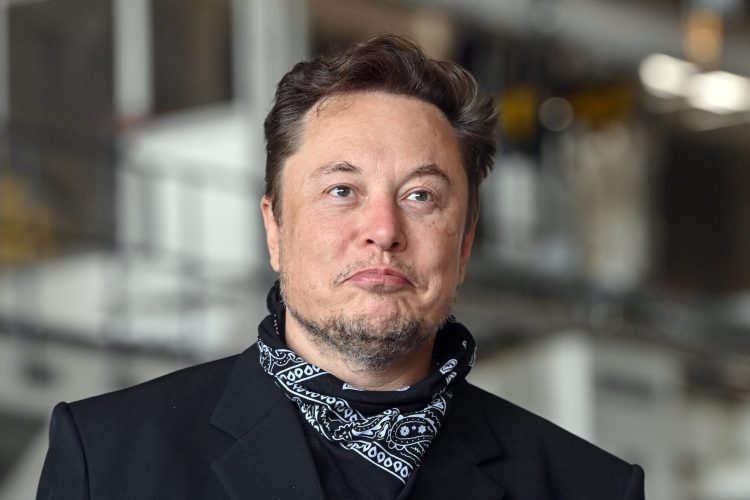马斯克在股票期权上犯下昂贵错误,你最好不要重蹈覆辙

在未来几个月内,埃隆·马斯克将面临数十亿美元的税单。他正在试图弄清楚如何筹集所需资金,以购买价值237亿美元的特斯拉(Tesla)的股票。
他估计需要缴纳的税额,几乎可以与一个小国的国内生产总值相媲美——达到125亿美元之多。这其实能够避免。马斯克原本可以在开始时就行使股票期权,这样他就能够省下数十亿美元的税收。
他的遭遇对初创公司的普通员工们来说,是一个警示。在行使股票期权上拖延不决,可能会导致一笔巨大的税单。
马斯克的特斯拉股票期权
2012年,正值上市两年,特斯拉处于挣扎中。这一年,Model S车型进入生产阶段,但这家公司在很大程度上依然在手工制造汽车,平均速度仅为每周5辆。当时的特斯拉股价约为6美元/股。
当时,特斯拉的董事会为马斯克设定了10个颇具野心的目标,并且承诺,如果这些目标全部实现,他就将获得共计26374505股特斯拉股票期权,执行价为每股6.24美元。
马斯克早早地抵达了这些里程碑,每每完成一个目标,他就成功解锁了263万份股票期权中的一部分。
这也意味着,每次他达到一个新的里程碑,他就解锁了以每股6.24美元购买特斯拉股票的能力。出于各种实际目的,他获得了非法定股票期权(non-qualified stock options)。这些期权被行使之后,就会像普通收入一样被征税。
现在,对于马斯克的非法定股票期权,美国国税局(IRS)将对股票期权行权价格(马斯克的情况是每股6.24美元)与股票当前价值(目前约为每股1000美元)之间的差额征收普通所得税。
如果他在股票期权归属时就行使了这些期权,他最终将仅支付1.481亿美元以购买这些股票,并面临预计5.989亿美元的税单,显然这一数字要更可控。
相反,马斯克做了许多获得股票期权的人都会做的事情。他一直等到股票期权快到10年到期时才决定行权。他将为此面临大约125亿美元的税单。
更要命的是,他曾经说过,他不想卖掉手中的任何一股股票。
马斯克在今年早些时候的CodeCon会议上接受采访时称:“我不会为撤资苦恼,大多数人都会这么做,他们会卖掉一些股票。在我手里,钱是第一个进来的,也将是最后一个出去的。”
潜在的金融解决方案
那么问题来了:特斯拉的自称为Technoking的公司创始人,将如何筹集120多亿美元来行使自己的股票期权?
我们不妨猜测一下。马斯克已经拥有227131935股特斯拉股票,账面价值为2270亿美元。从理论上讲,他可以用他现有的股票作为抵押品,借入约127亿美元来行使他的股票期权。
这是马斯克过去使用过的一种金融手段。在最新的财务报告中,特斯拉透露,马斯克已经用9230万股股票作为抵押,为个人债务提供资金。
如果马斯克不想进一步负债,他就能够考虑无现金行权,即通过出售足够多的股票来支付行权成本和相关税费。但是,一次性出售数百万股有可能让特斯拉的股价下跌。此外,他已经说过他对出售不感兴趣。
他手头或许没有120亿美元现金,用来直接购买股票期权。每年,他都会拒绝接受自己的年薪。出于会计目的,他的年薪被设定为美国加利福尼亚州的最低工资。他还没有卖出特斯拉股票的大量头寸,这意味着他数十亿美元的净资产主要存在于纸面上。
在采访中,他说他靠债务生活。
无论他决定做什么,他最终都得从头再来。2018年,特斯拉的董事会授予马斯克新的绩效奖金,即新的股票期权,如果他可以实现另外12个目标(包括将公司发展到6500亿美元的市值),他就将解锁这些股票。
他已经在解锁新奖金的路上了。特斯拉在2021年年初达到了其市值目标,目前的估值为1万亿美元。我们只能希望,这一次,他能够从股票期权税收这个昂贵的教训中吸取教训,在期权归属时就行使期权。
不过对于大多数的创业公司员工来说,他们不需要拿出120亿美元来行使他们的股票期权。2020年,Secfi的客户平均花费50.5923万美元来行使他们的股票期权——这是大多数人一生中最昂贵的交易之一。
本文作者别耶·皮奥瓦斯迪是Secfi的股权战略总监。Secfi是一个为初创公司的高管和员工提供股权规划平台。(财富中文网)
编译:杨二一
在未来几个月内,埃隆·马斯克将面临数十亿美元的税单。他正在试图弄清楚如何筹集所需资金,以购买价值237亿美元的特斯拉(Tesla)的股票。
他估计需要缴纳的税额,几乎可以与一个小国的国内生产总值相媲美——达到125亿美元之多。这其实能够避免。马斯克原本可以在开始时就行使股票期权,这样他就能够省下数十亿美元的税收。
他的遭遇对初创公司的普通员工们来说,是一个警示。在行使股票期权上拖延不决,可能会导致一笔巨大的税单。
马斯克的特斯拉股票期权
2012年,正值上市两年,特斯拉处于挣扎中。这一年,Model S车型进入生产阶段,但这家公司在很大程度上依然在手工制造汽车,平均速度仅为每周5辆。当时的特斯拉股价约为6美元/股。
当时,特斯拉的董事会为马斯克设定了10个颇具野心的目标,并且承诺,如果这些目标全部实现,他就将获得共计26374505股特斯拉股票期权,执行价为每股6.24美元。
马斯克早早地抵达了这些里程碑,每每完成一个目标,他就成功解锁了263万份股票期权中的一部分。
这也意味着,每次他达到一个新的里程碑,他就解锁了以每股6.24美元购买特斯拉股票的能力。出于各种实际目的,他获得了非法定股票期权(non-qualified stock options)。这些期权被行使之后,就会像普通收入一样被征税。
现在,对于马斯克的非法定股票期权,美国国税局(IRS)将对股票期权行权价格(马斯克的情况是每股6.24美元)与股票当前价值(目前约为每股1000美元)之间的差额征收普通所得税。
如果他在股票期权归属时就行使了这些期权,他最终将仅支付1.481亿美元以购买这些股票,并面临预计5.989亿美元的税单,显然这一数字要更可控。
相反,马斯克做了许多获得股票期权的人都会做的事情。他一直等到股票期权快到10年到期时才决定行权。他将为此面临大约125亿美元的税单。
更要命的是,他曾经说过,他不想卖掉手中的任何一股股票。
马斯克在今年早些时候的CodeCon会议上接受采访时称:“我不会为撤资苦恼,大多数人都会这么做,他们会卖掉一些股票。在我手里,钱是第一个进来的,也将是最后一个出去的。”
潜在的金融解决方案
那么问题来了:特斯拉的自称为Technoking的公司创始人,将如何筹集120多亿美元来行使自己的股票期权?
我们不妨猜测一下。马斯克已经拥有227131935股特斯拉股票,账面价值为2270亿美元。从理论上讲,他可以用他现有的股票作为抵押品,借入约127亿美元来行使他的股票期权。
这是马斯克过去使用过的一种金融手段。在最新的财务报告中,特斯拉透露,马斯克已经用9230万股股票作为抵押,为个人债务提供资金。
如果马斯克不想进一步负债,他就能够考虑无现金行权,即通过出售足够多的股票来支付行权成本和相关税费。但是,一次性出售数百万股有可能让特斯拉的股价下跌。此外,他已经说过他对出售不感兴趣。
他手头或许没有120亿美元现金,用来直接购买股票期权。每年,他都会拒绝接受自己的年薪。出于会计目的,他的年薪被设定为美国加利福尼亚州的最低工资。他还没有卖出特斯拉股票的大量头寸,这意味着他数十亿美元的净资产主要存在于纸面上。
在采访中,他说他靠债务生活。
无论他决定做什么,他最终都得从头再来。2018年,特斯拉的董事会授予马斯克新的绩效奖金,即新的股票期权,如果他可以实现另外12个目标(包括将公司发展到6500亿美元的市值),他就将解锁这些股票。
他已经在解锁新奖金的路上了。特斯拉在2021年年初达到了其市值目标,目前的估值为1万亿美元。我们只能希望,这一次,他能够从股票期权税收这个昂贵的教训中吸取教训,在期权归属时就行使期权。
不过对于大多数的创业公司员工来说,他们不需要拿出120亿美元来行使他们的股票期权。2020年,Secfi的客户平均花费50.5923万美元来行使他们的股票期权——这是大多数人一生中最昂贵的交易之一。
本文作者别耶·皮奥瓦斯迪是Secfi的股权战略总监。Secfi是一个为初创公司的高管和员工提供股权规划平台。(财富中文网)
编译:杨二一
Elon Musk is facing a multibillion-dollar tax bill in the coming months as he tries to figure out how to come up with the money he needs to buy $23.7 billion worth of Tesla shares.
His estimated tax bill rivals the GDP of a small country at $12.5 billion. It was largely avoidable. Musk could have saved billions of dollars in taxes by simply exercising his stock options as they vested.
The good news is that his story is a cautionary tale for rank-and-file startup employees. Waiting to exercise your stock options can result in a massive tax bill.
Elon Musk’s Tesla stock options
In 2012, two years after going public, Tesla was struggling. The Model S entered production that year, but the company was still largely building cars by hand, at an average pace of five cars per week. Shares were trading at around $6 each.
Tesla’s board of directors set out 10 ambitious goals for Musk, promising him a total of 26,374,505 shares of Tesla stock options, with a strike price of $6.24 per share, if they were all met.
Musk began hitting his milestones early, unlocking a tranche of 2.63 million stock options every time he did so.
Every time he hit a new milestone, he unlocked the ability to purchase Tesla stock at $6.24 per share. For all practical purposes, he earns non-qualified stock options (NSOs), which are taxed as ordinary income as soon as they’re exercised.
With NSOs, the IRS applies ordinary income taxes on the difference between the stock options exercise price, in Musk’s case, $6.24 per share, and the stock’s current value—around $1,000 per share now.
If he had exercised his stock options as they vested, he would have ended up paying $148.1 million to purchase the shares and faced a far more manageable estimated tax bill of $598.9 million.
Instead, Musk did what many people earning stock options do. He waited until his stock options were on the verge of hitting their 10-year expiration date before deciding to exercise. And he’s facing an estimated $12.5 billion tax bill for it.
Musk’s added challenge? He’s said he doesn’t want to sell any of his shares.
“I have not really bothered to take money off the table, which is a common thing that most people do—they sell some of their stock,” Musk said in an interview earlier this year at CodeCon. “[My money] was the first in, and it’ll be the last out.”
Potential financial solutionsThat raises the question: How will Tesla’s self-proclaimed Technoking come up with the more than $12 billion necessary to exercise his stock options?
Here, we stray into speculation. Musk already owns 227,131,935 shares of Tesla stock, worth, on paper, $227 billion. In theory, he could use his existing shares as collateral to borrow the roughly $12.7 billion he needs to exercise his stock options.
This is a financial tactic he’s used in the past. In the company’s latest financial report, Tesla revealed Musk had already used 92.3 million shares as collateral to fund personal debt.
If Musk didn’t want to go further into debt, he could consider a cashless exercise, where he’d sell enough of his shares to cover the cost of exercising and related taxes. However, selling millions of shares at once risks tanking Tesla’s share price. Plus, he’s already said he isn’t interested in selling.
The one thing he (likely) doesn’t have on hand is $12 billion in cash, to purchase his stock options outright. Every year, he rejects his annual salary which, for accounting purposes, is set to California’s minimum wage. He hasn’t sold significant positions in Tesla stock, which means his multibillion-dollar net worth largely exists on paper.
In interviews, he’s said he lives off debt.
Whatever he decides to do, he’ll have to eventually do it all over again. In 2018, Tesla’s board of directors granted Musk a fresh performance bonus of new stock options, which he’ll unlock if he can meet another 12 goals, including growing the company to a market capitalization of $650 billion.
He’s already well on his way to unlocking that new bonus. The company passed its market cap goal at the start of 2021 and is currently valued at $1 trillion. We can only hope that this time around, he learns from this expensive lesson in stock options taxes, and exercises his options as they vest.
Most startup employees won’t need to come up with $12 billion to exercise their stock options. In 2020, Secfi customers spent an average of $505,923 to exercise their stock options—one of the most expensive transactions most people will make in their life.
Vieje Piauwasdy is the director of equity strategy at Secfi, an equity planning platform for startup executives and employees.













